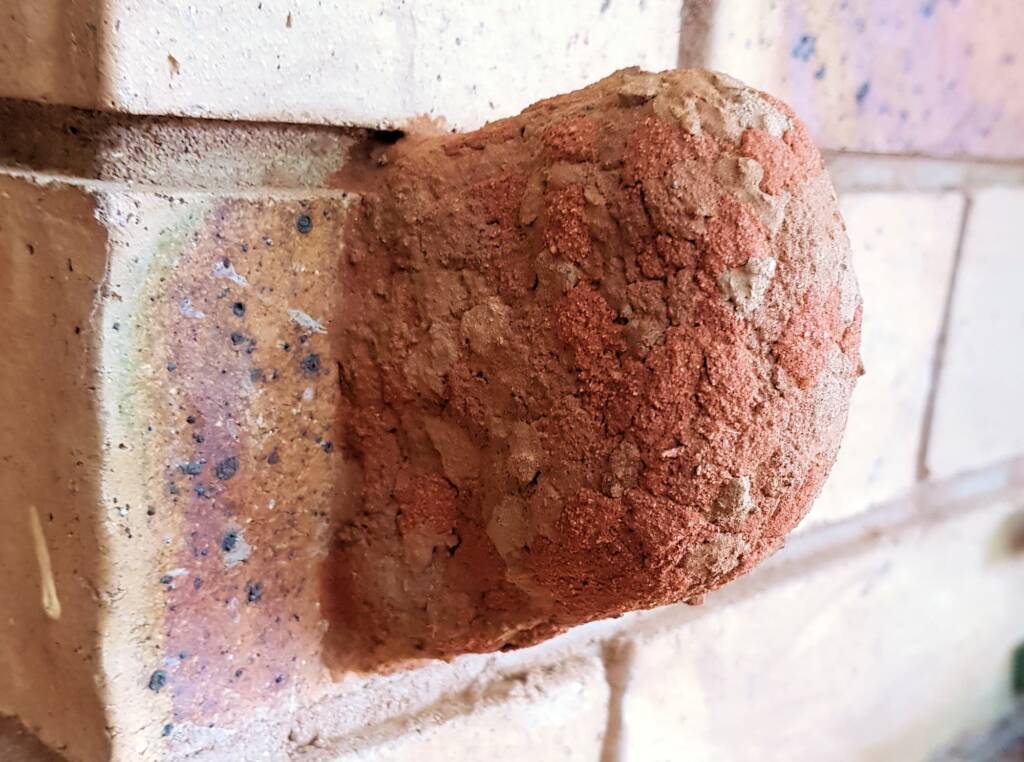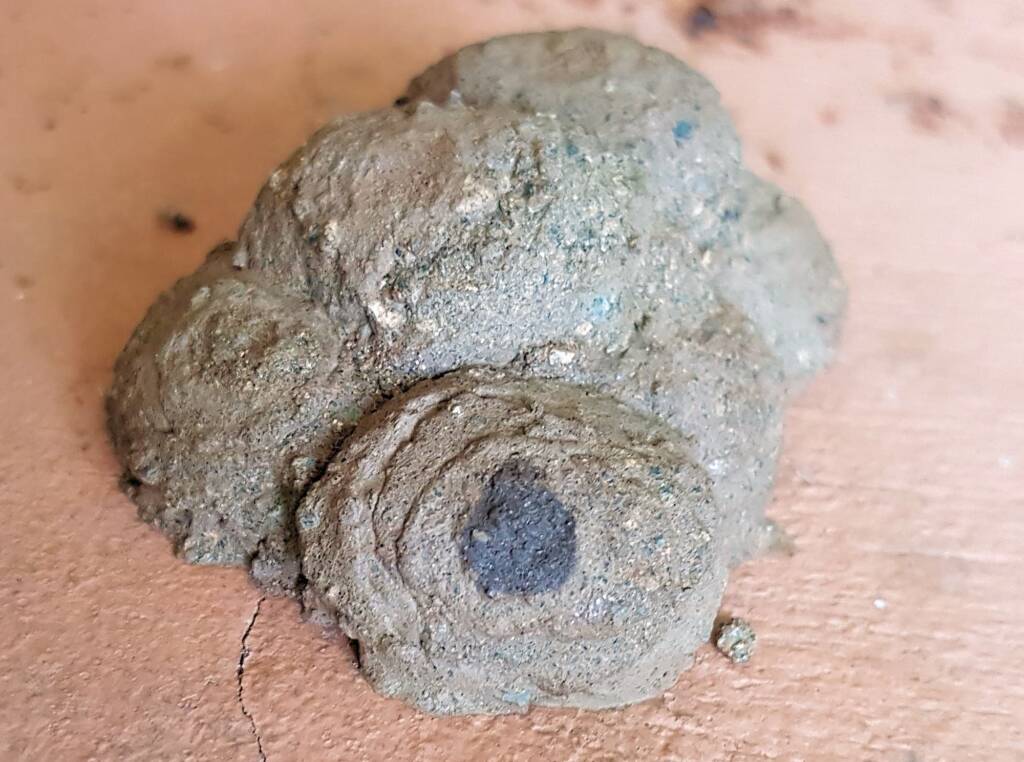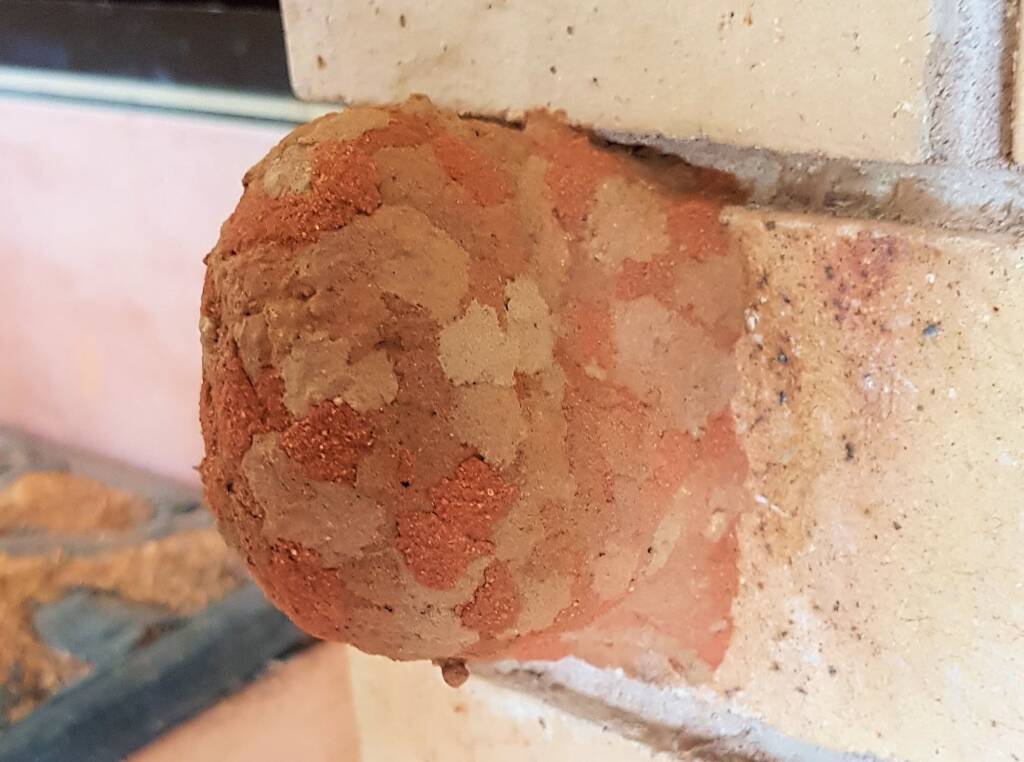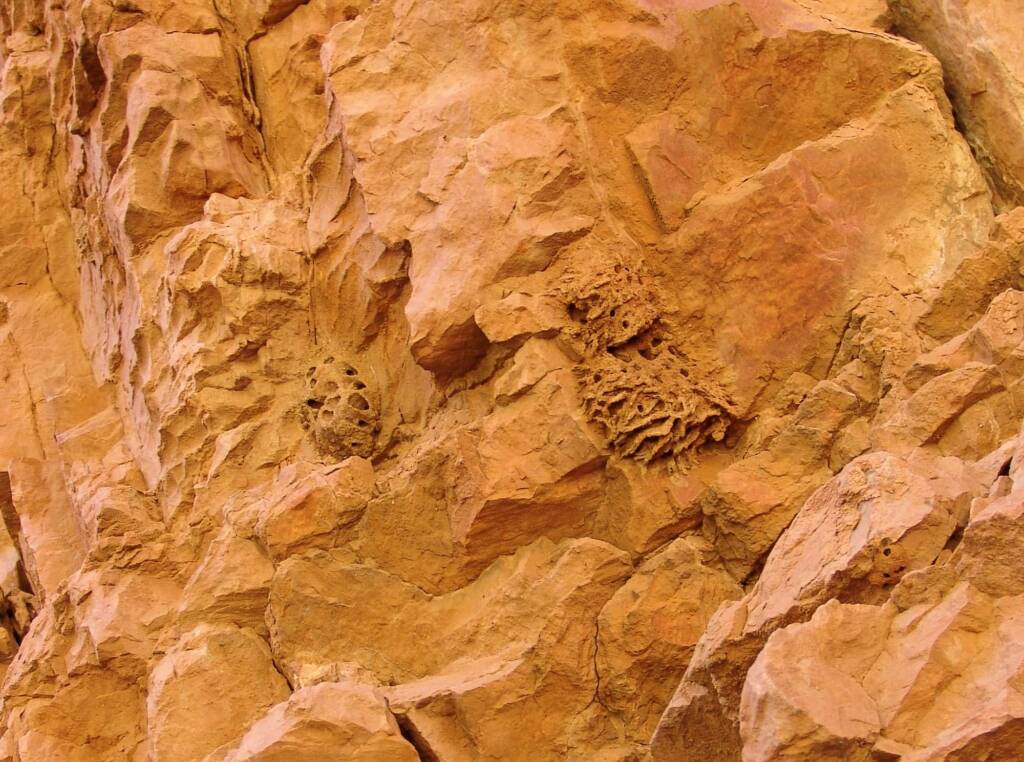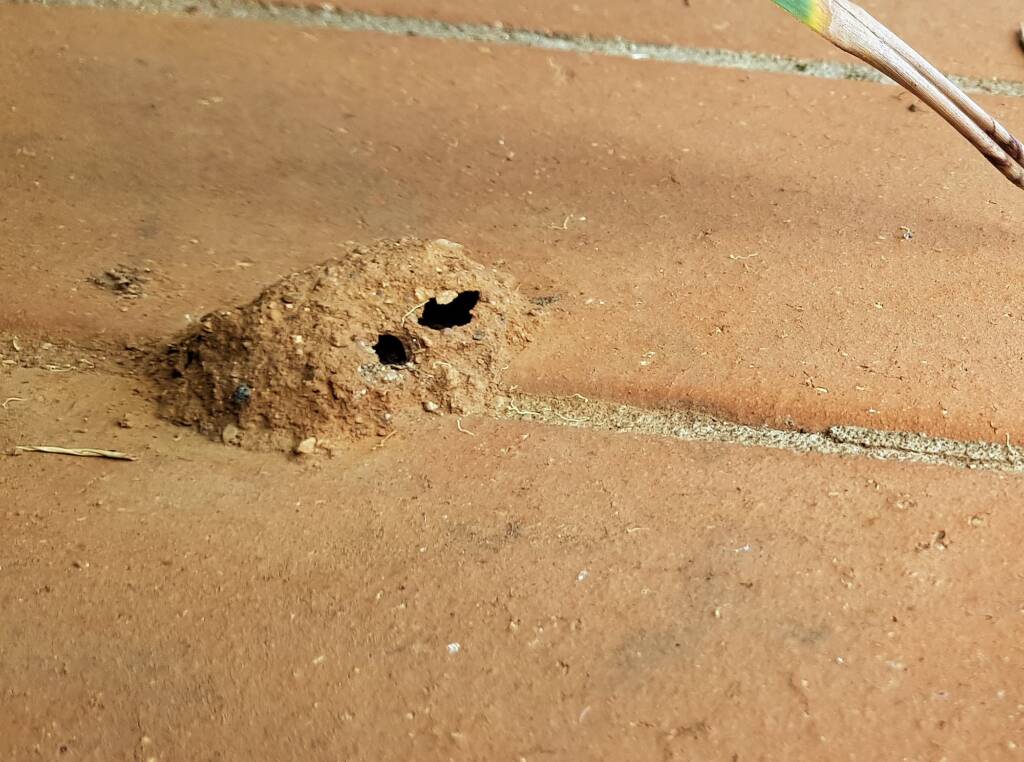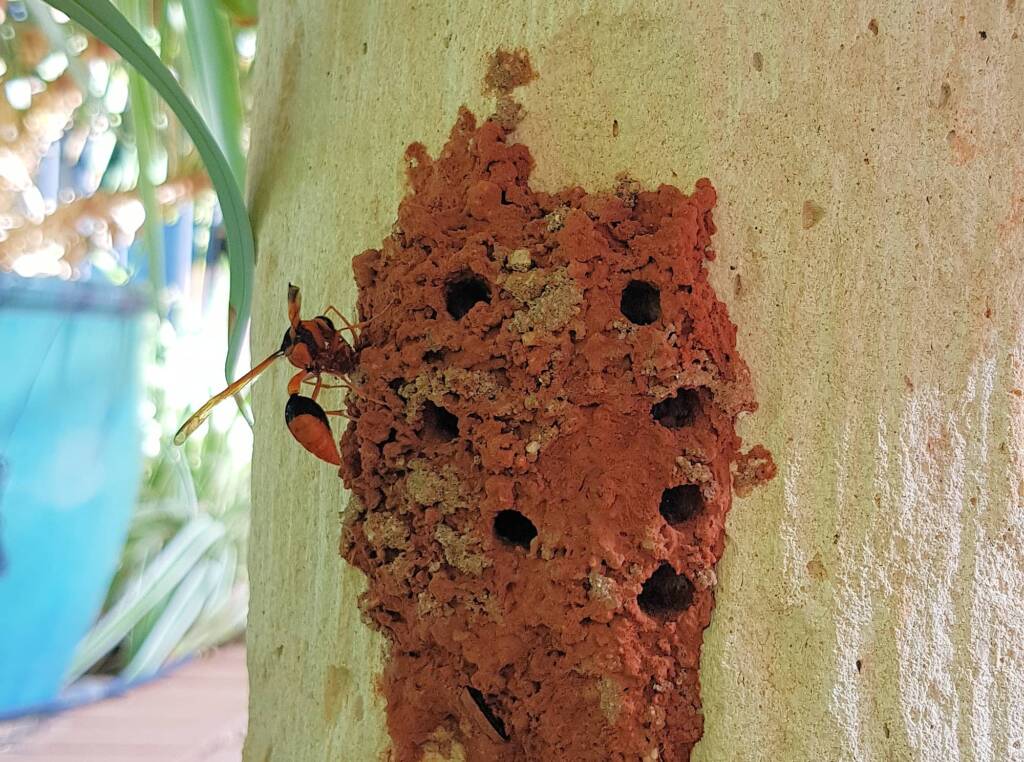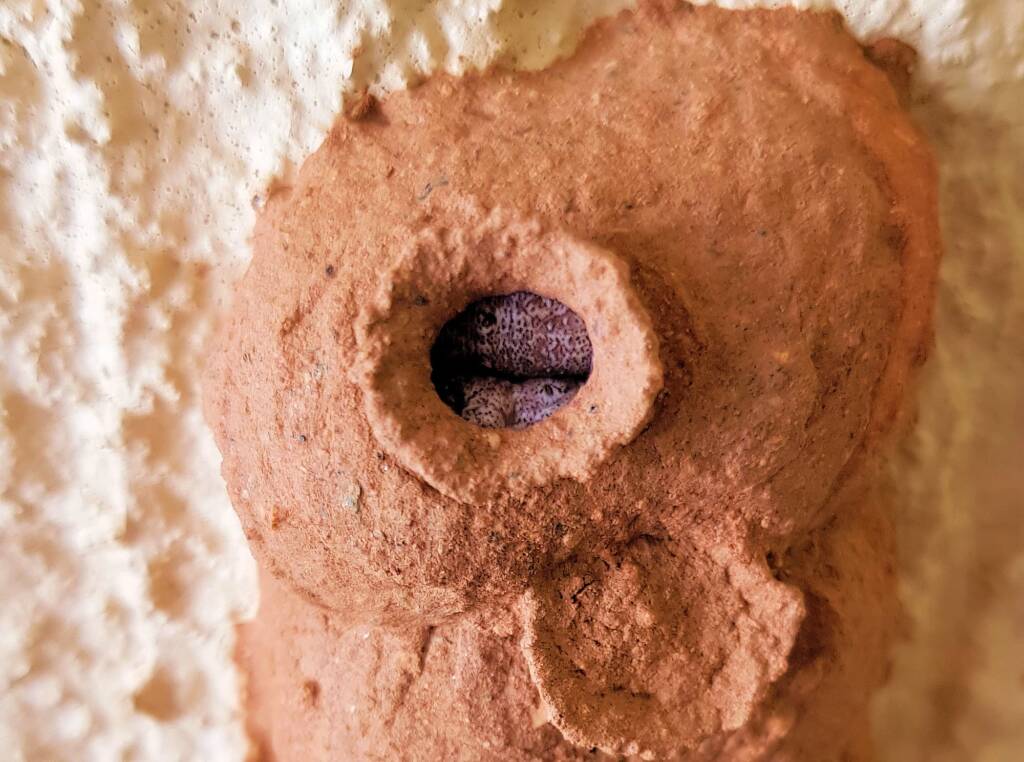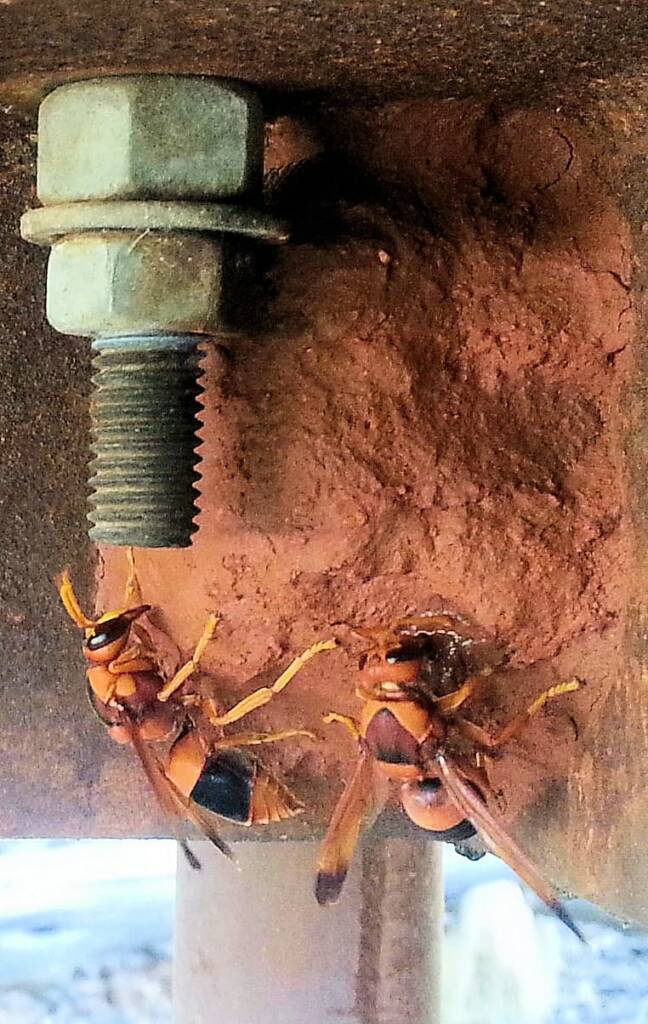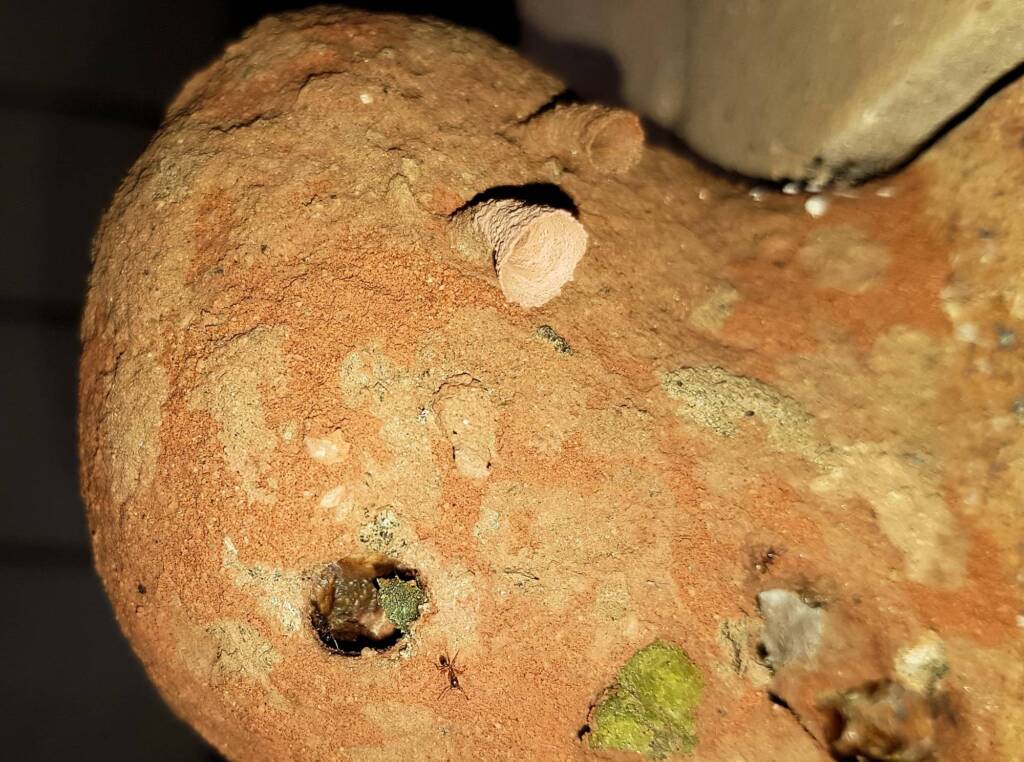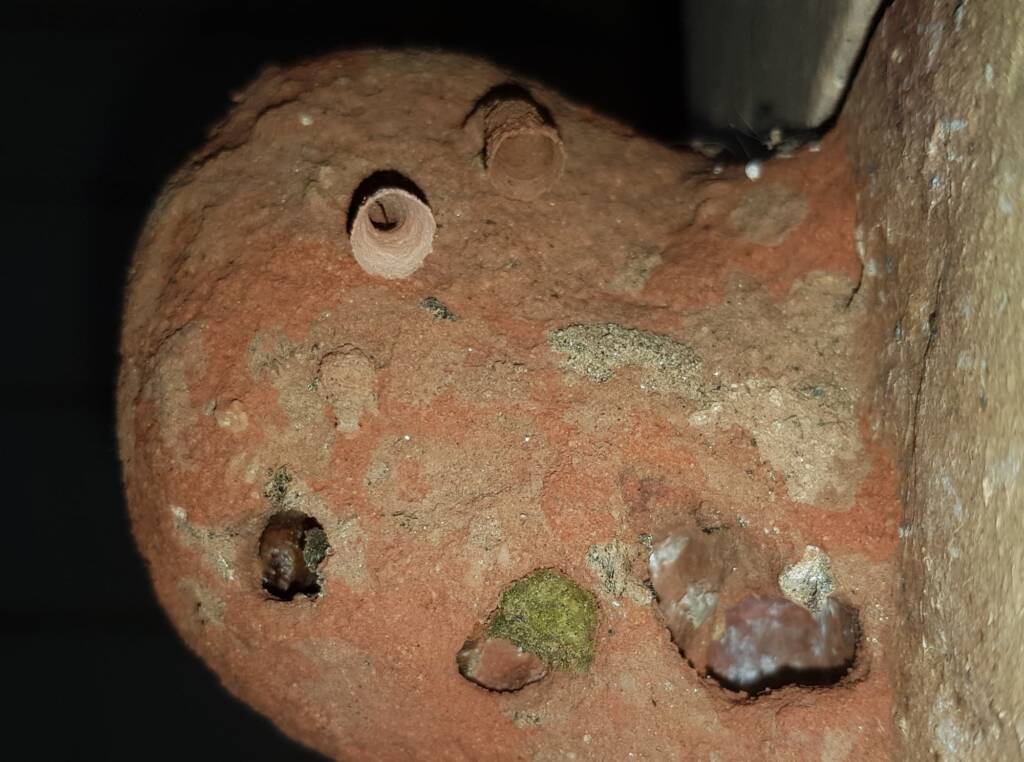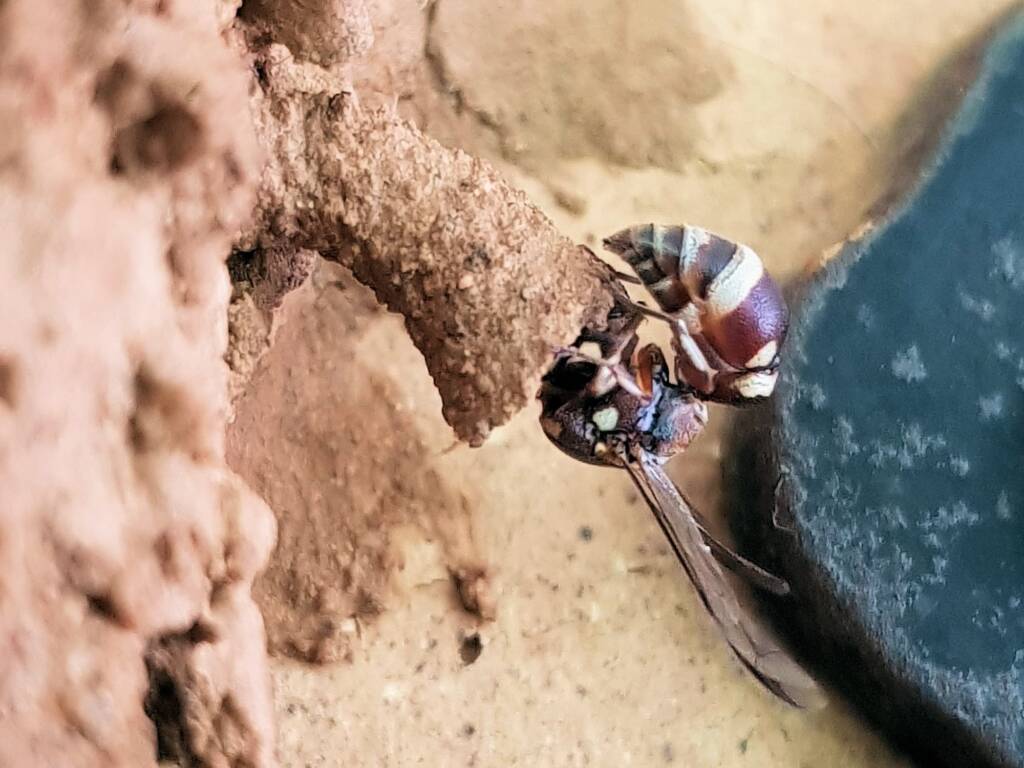Alice Springs Fauna •
Alice Springs WaspsAbispa ephippium Agriomyia maculata Bembicinae Bembix Blue Hairy Flower Wasp Cryptocheilus Cryptocheilus bicolor Delta latreillei Delta philantes Eumeninae Mud Nests and Potter Wasps Orchid Dupe Wasp Paralastor (Potter Wasp) Pseudabispa bicolor ssp. nigrocinctoides Sceliphron laetum Thynnid Flower Wasps Velvet Ant Family (Tribe Dasymutillini) Yellow Hairy Flower Wasp (Radumeris radula) Yellow Hairy Flower Wasp (Radumeris tasmaniensis)
Many people would be familiar with the mud nests that are created by the different species of native wasps. The shape and location of these mud nests can vary from those hanging in trees, shrubs and vines, against window and door frames, under building eves, against sheltered walls, under outdoor furniture, tables and seats, next to the swimming pool (usually in a sheltered spot), and on the outside walls of buildings and houses.
Here in Alice Springs, we are have many fine examples of mud nest structures made by the different species of mud wasps, often the largest and most commonly seen being the mud nests of the Delta latreillei and Abispa ephippium species.
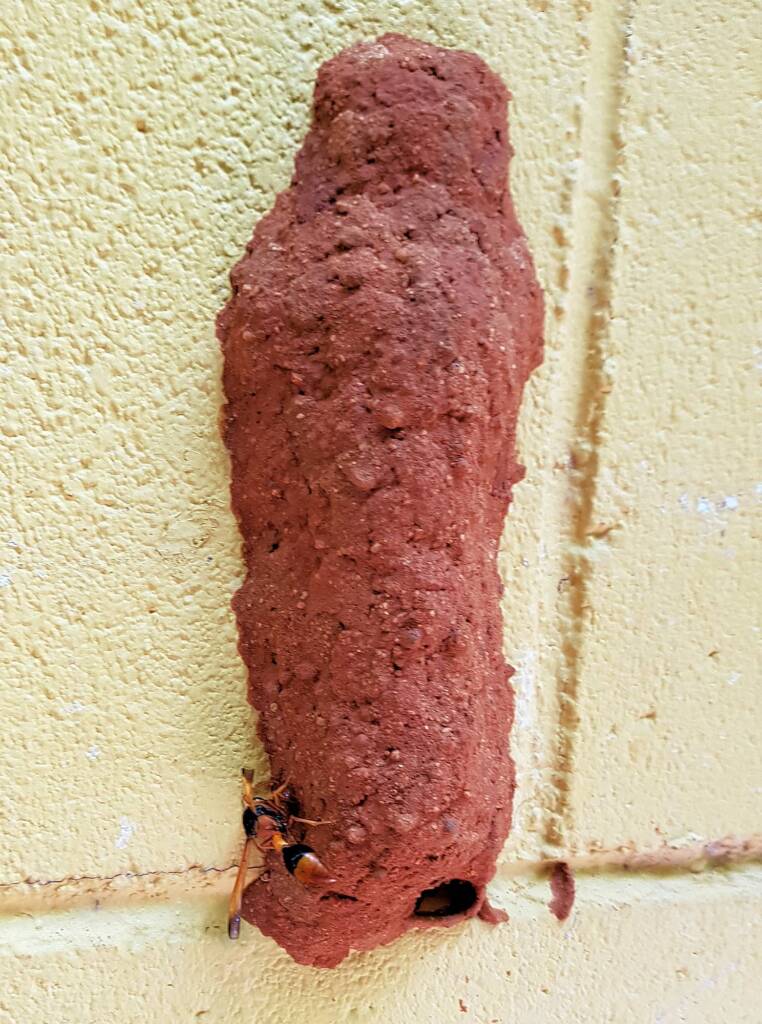
The common name Mud Wasp is often interchanged with the name Potter Wasp or Mud Dauber, and belong to the genus Abispa sp that includes similarly coloured wasps with orange and black markings.
Whilst some mud nests are often similar in size and shape, others are wildly different. Some species of wasps will build the same or very similar shape and size mud nests. Others, such as the species Delta latreillei have been documented building very different shaped mud nests. In the following photo, the same species of wasp Delta latreillei was seen building these two differently shaped nests in Alice Springs (this was done over 2-3 years, the one on the wall being constructed first).
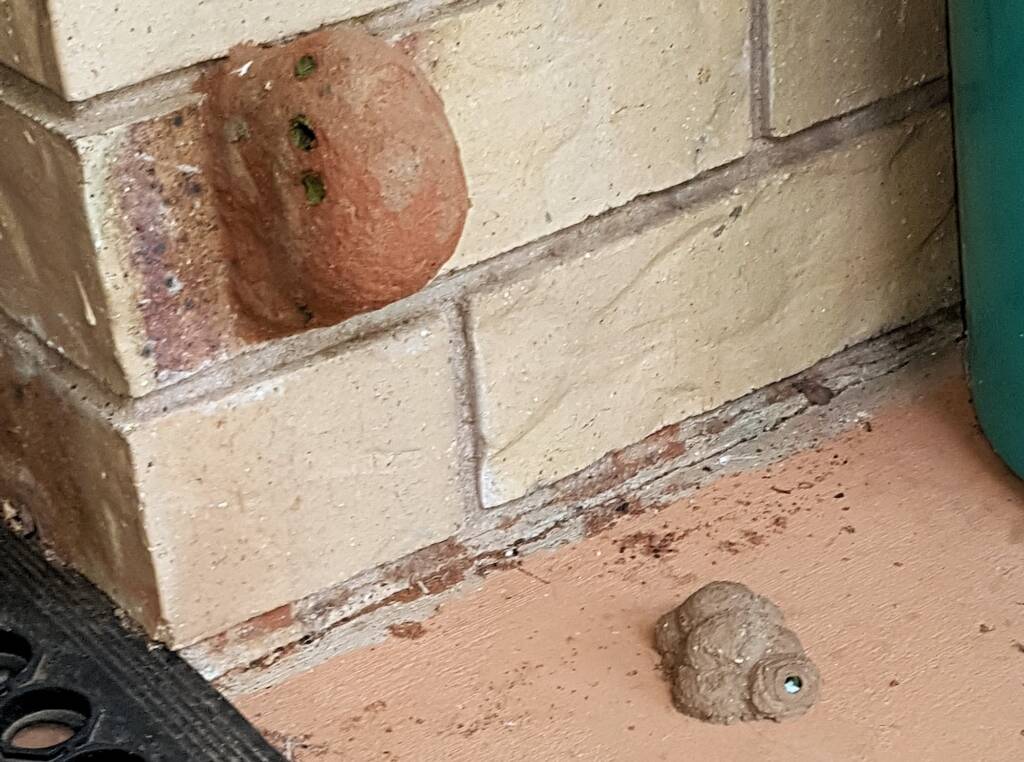
The mud wasps may revisit the same mud nest over time (it most likely would be the original wasp builder), each time adding more mud to the nest, in which it would lay its larvae. Eventually it would give up the nests or it is thought that the original wasp would have died and other mud wasp would take over the continual construction of the mud nest.
When the larvae of the mud wasp emerges and leaves the nest, it then leaves the vacant cells. This provides the opportunity for other insects to take up residence in the mud nests, such as native bees, as has been document with the Megachile aurifrons in Alice Springs.
— click image to view full screen
— click image to view full screen
In the following photo, you can see a Paralastor sp that have co-opted a disused mud nest (although in this case native Megachile aurifrons have reused some of the holes for their young, sealing them off with a brown-green resin.
— click image to view full screen
Check out our pages on Australian Mud Nest Wasps, Mud Wasp and the Potter Wasp. Also our blog It’s a jungle out there! and a penthouse with a view…
- Scientific classification
- Kingdom: Animalia
- Phylum: Arthropoda
- Class: Insecta
- Order: Hymenoptera
- Suborder: Apocrita
- Superfamily: Apoidea
- Families:
- Sphecidae
- Crabronidae
- Scientific classification
- Kingdom: Animalia
- Phylum: Arthropoda
- Class: Insecta
- Order: Hymenoptera
- Family: Vespidae
- Scientific classification
- Kingdom: Animalia
- Phylum: Arthropoda
- Class: Insecta
- Order: Hymenoptera
- Family: Vespidae
- Subfamily: Eumeninae
Alice Springs WaspsAbispa ephippium Agriomyia maculata Bembicinae Bembix Blue Hairy Flower Wasp Cryptocheilus Cryptocheilus bicolor Delta latreillei Delta philantes Eumeninae Mud Nests and Potter Wasps Orchid Dupe Wasp Paralastor (Potter Wasp) Pseudabispa bicolor ssp. nigrocinctoides Sceliphron laetum Thynnid Flower Wasps Velvet Ant Family (Tribe Dasymutillini) Yellow Hairy Flower Wasp (Radumeris radula) Yellow Hairy Flower Wasp (Radumeris tasmaniensis)
Alice Springs FaunaAlice Springs Native Bees Alice Springs Beetles Alice Springs Birds Alice Springs Gastropods (Gastropoda) Alice Springs Insects Alice Springs Marsupials Alice Springs Reptiles Alice Springs Spiders
Alice Springs FloraAlice Springs Flora Index Acacia ligulata Annual Yellowtop Apple Bush Bougainvillea Burdekin Plum Carob Tree (Ceratonia siliqa) Cattle Bush Desert Cotton (Aerva javanica) Desert Oak Eremophila Wildberry Feijoa sellowiana Flannel Cudweed Fork-leaf Corkwood Ghost Gum Golden Everlasting Kurrajong Lemon-flowered Gum MacDonnell’s Desert Fuchsia Native Bluebell Native Tomato Needlewood Olive Tree Perennial Yellow Top Rat’s Tail River Red Gum Inland River Red Gum Rosy Dock Round-leaved Mallee Scurvy Grass Silky Eremophila Stemodia viscosa Striped Mintbush Sturt’s Desert Pea Sturt’s Desert Rose Tangled Leschenaultia Tar Vine Weeping Bottlebrush White Cedar Yellow Billybutton Yellow-keeled Swainsona Yellow Oleander

